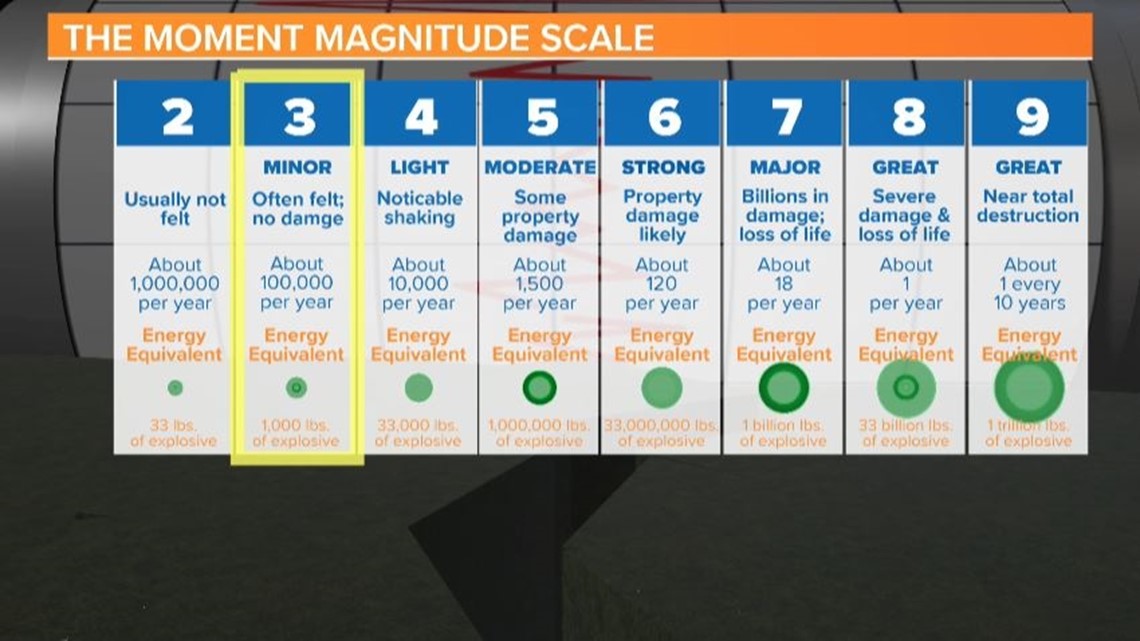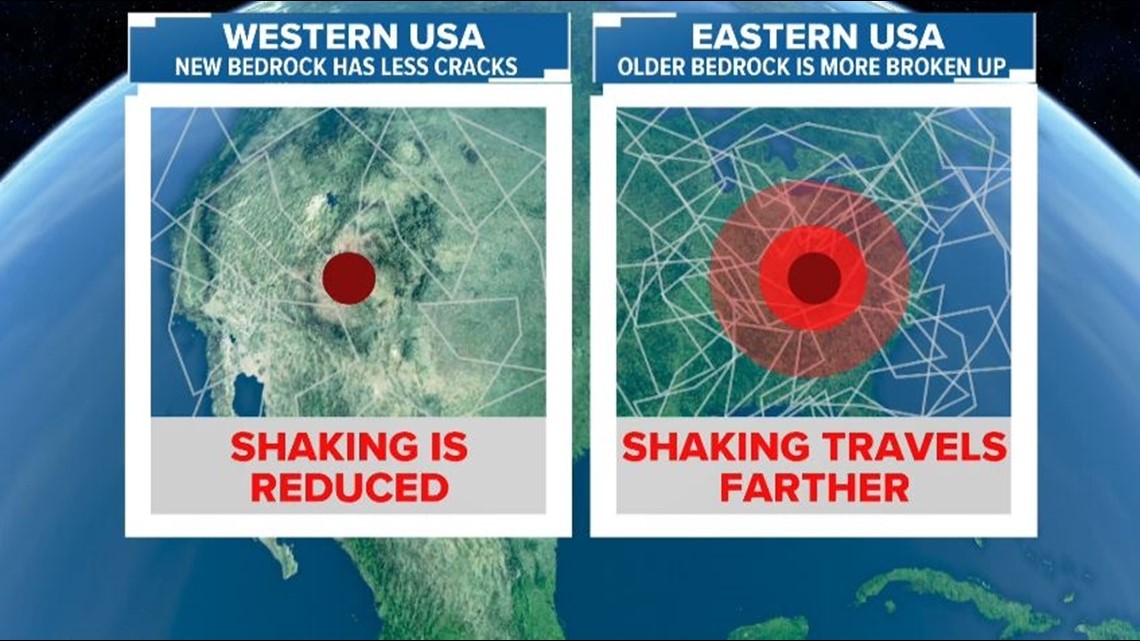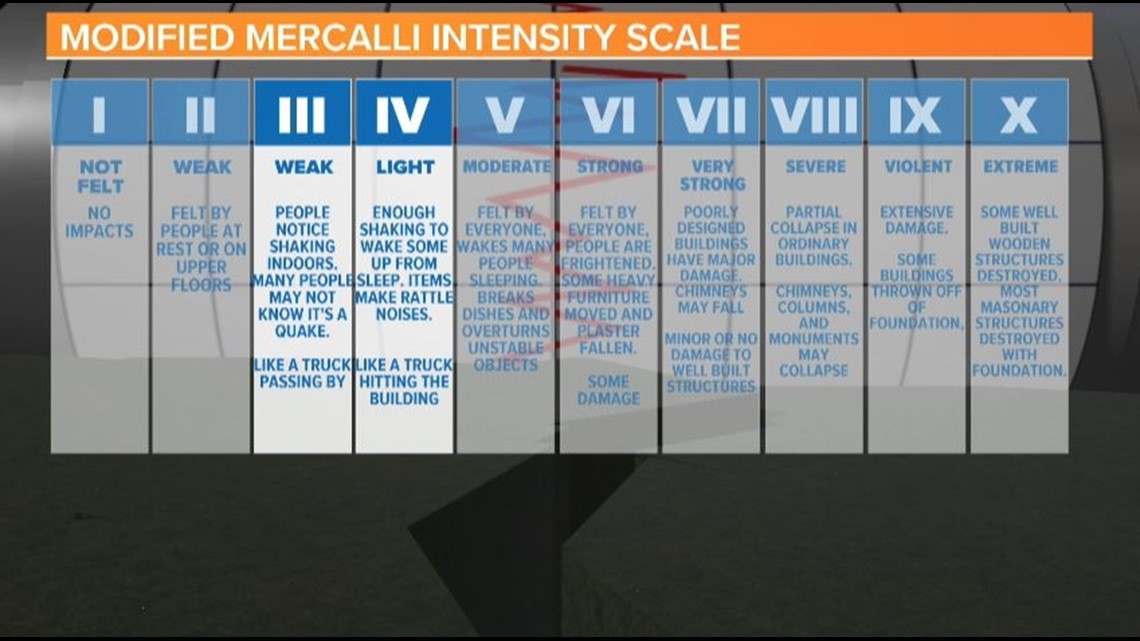Things have been off to a shaky start in the Midlands in 2022. Kershaw County has reported 3 earthquakes in the first week of January.
The two quakes reported Wednesday brought the total number of earthquakes in the county to 10 since the 3.3 earthquake on December 21, 2021 that set off this swarm. Another noticeable cluster -- or swarm -- of tremors happened near Jenkinsville in Fairfield County in 2021 from October 25 to November 1.
The earthquakes in Kershaw County were strong enough to rattle some nerves and even wake people up from a sleep during the early morning hours of January 5 when the second largest quake of the series, a 2.6, struck in the middle of the night.
Earthquakes can happen as far as 500 miles below our feet. When the USGS reports an earthquake at 0 km -- the earthquake is usually directly from human activity like a quarry blast. The 2.6 earthquake in Kershaw county on January 5 was the second largest in the most recent swarm and it occurred nearly half a mile below the surface. The strongest -- a 3.3 on December 27th -- occurred almost 2 miles below the surface. All the recent quakes in Kershaw County have happened at a depth of less than 5 miles below the surface.
Earthquakes are measured on two scales: The moment magnitude scale uses a seismograph to measure the total energy of an earthquake, and the Modified Mercalli Intensity Scale measures the shaking felt in different communities.
The moment magnitude works on a logarithmic scale so each level is greater by a power of 10. In other words, a 3.0 quake is 100 times stronger than a 2.0, but a 4.0 quake is 1000 times stronger than a 3.0. Some people incorrectly call these measurements the Richter scale which has been retired because the moment magnitude scale uses a more accurate method.


A deep earthquake isn't felt as much as a shallow quake. And on the east coast, the bedrock is older and more fractured so an earthquake in South Carolina produces a lot more shaking than that same quake on the west coast.


This is where the Modified Mercalli intensity scale comes in. It measures the intensity of the shaking for specific areas using roman numerals. A 1 isn't felt. The scale goes up to 10 and at that level it's damaging. The 3.3 earthquake that started the recent swarm of quakes in Kershaw County measured as a 3, borderline 4 on the Modified Mercalli Intensity Scale (MMI).


A 4 means on the MMI scale means it was felt indoors by many people and outdoors by a few. The shaking was strong enough to wake people up and cause dishes windows or disturbed doors to raddle and make a sound.
Most people even near the epicenter felt a 3 on the Modified Mercalli intensity scale which is noticeable indoors and the shaking is similar to a passing truck. At this intensity many people do not recognize it as an earthquake. Farther out toward the Columbia area, the shaking was measured as 2 which is felt only by a few people at best. The other reports came in as a 1 which means it was not felt in their community.
Link to USGS Community Response Survey for each Kershaw County Earthquake.
The South Carolina Department of Emergency Management offers a document with several tips for those who might feel shaking or an earthquake.
If indoors:
- First, if you are in a high-rise building, get against an interior wall if there is no heavy desk or table nearby.
- Do not use the elevators
- Drop to the floor
- Take cover, preferably under a sturdy desk or table. Experts say to hold onto the desk or table and be prepared to move with it.
- If not possible, make sure to protect your head and neck with your arms.
- Hold that position until the ground stops shaking and it is safe to move.
- If in a store, move away from the shelves and displayed objects, do not rush toward the exit.
- If in a theater or stadium, stay in your seat
If outdoors:
- Move away from electrical wires or poles, trees, and signs.
- If near a building, duck into a doorway to protect against falling bricks, glass, or other debris.
- If driving, pull over to the side of the road and stop, avoid overpasses, bridges and power lines. Stay inside the vehicle until the ground stops shaking.
- Always remember to protect your head and neck.

